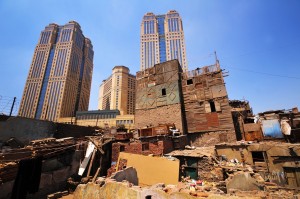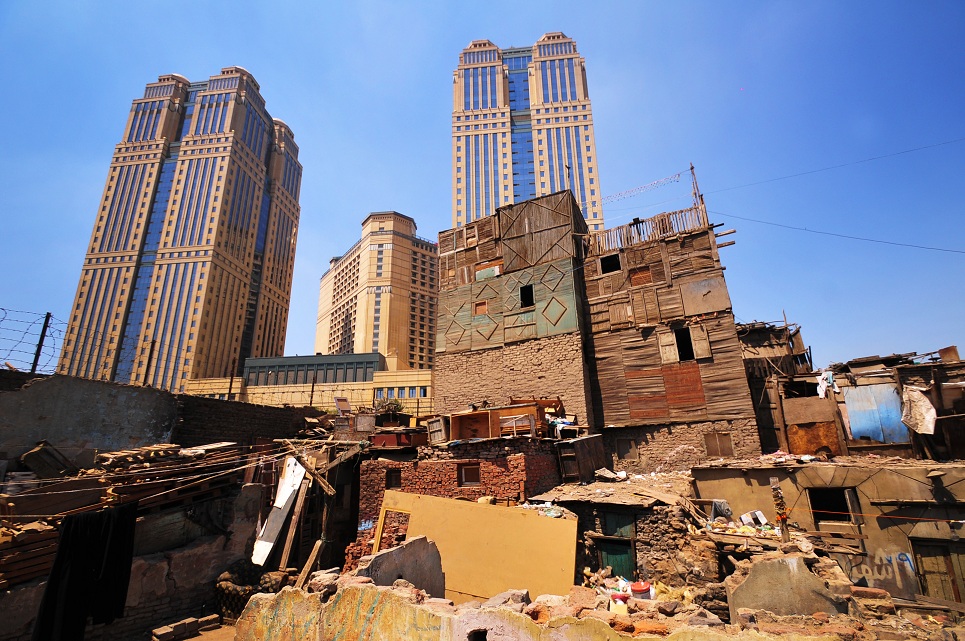
By: Muhammad Ayad
Prime Minister Hesham Qandil signed an agreement on Sunday with Egypt’s Slum Development Fund and the governorates of Cairo and Minya to fund the development of a series of projects in the Nile Towers neighbourhood of Ramlet Bulaq, in addition to the Al-Ashash Mahfouz region of Minya, at an estimated cost of EGP 126m.
The current Nile Towers neighbourhood in Ramlet Bulaq is located on 4.26 acres of land, and at times has been deemed unsuitable for living by various agencies. The project will start with the phased evacuation of the area’s residents, to be relocated to 191 temporary alternative housing units, and the construction of 9 units for commercial purposes. Four permanent 12 story towers will then be constructed, equipped with 368 housing units, 40 commercial units and 8 administrative units.
Cairo’s Governor claimed that the estimated cost of the project would total EGP 139.022m, with the Fund providing EGP 54.376m, enough to cover the cost of the initial construction of the 4 towers.
The governorate will be required to provide the remaining EGP 84.646m to cover the cost of demolition fees and compensation for the land’s previous owners.
Minya governorate also recently signed an agreement with the Slum Development Fund to renovate and reconstruct the Al-Ashash Mahfouz region, located on four acres of urban land. Most of the buildings set to be destroyed in the region have been rated as second tier danger risks according to the country’s national ranking system.
The project will be implemented over a period of 24 months at an estimated cost of EGP 92.753m, of which the Fund will provide EGP 71.650m, used to establish 37 new residential housing units. The governorate will be tasked with providing the remaining EGP 21.103m.
The governorate plans on eventually returning a portion of the funds that will be used to reconstruct the Al-Ashash region from the returns made on sales of surplus commercial units. These returns are expected to reach EGP 47.5m, of which EGP 24.150 will be used to fund social welfare projects that will not be returned to the Fund.
The project will consist of the resettling of the region’s residents, and the construction of an additional 35 new buildings. Two other new buildings will be built in neighbouring regions, in addition to the renovation of three already constructed buildings, both publically and privately owned. The entire project will provide 859 new residential units, and 35 new commercial units.




